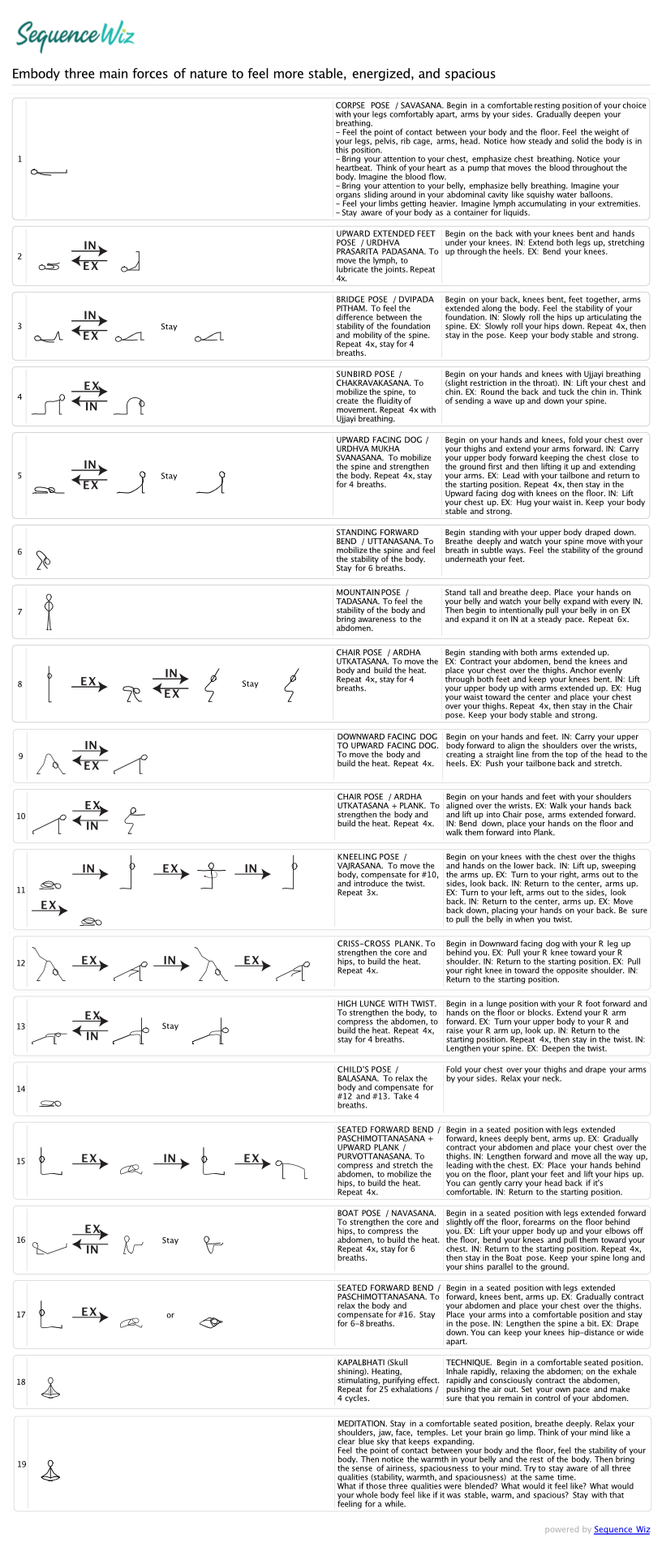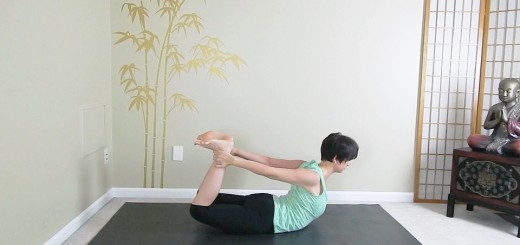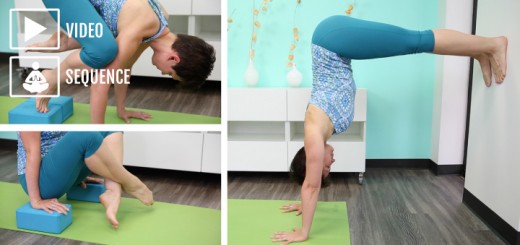Embody three main forces of nature to feel more stable, energized, and spacious
0According to Samkhya philosophy, each one of us is made up of different forms of energy, light, and matter that show up as an interplay of five main elements: air, space, fire, water, and earth. When these elements are present within living creatures, they are animated with life force or prana, becoming doshas.
- Energy (Air/Space) + Prana = Vata dosha (with main qualities of mobility and expression)
- Light (Fire/Water) + Prana = Pitta dosha (with main qualities of heat, intensity, and transformation)
- Matter (Water/Earth) + Prana = Kapha dosha (with main qualities of cohesion and stability)
Doshas form the physical body and are responsible for its substance and function.
- Vata is the air that is present in hollow spaces within the body, like joints, bone cavities, and some organs. It is also represented as a life force and the energy of thought that moves within the mind. Vata is the energy produced through the digestion of food.
- Pitta is the quality of heat responsible for all forms of digestion and transformation in the body. It is present in the digestive system, the sweat glands, in the blood and lymph. Pitta is produced from the heat of blood.
- Kapha serves as a bodily container for both energy and heat. It is present in all sites of mucus production (lungs, sinuses, mouth, throat, nose, and gastrointestinal tract). It is produced through the plasma, which provides hydration and nourishment to all tissues.
Within our bodies, vata, pitta, and kapha depend on each other for optimal functioning.
- Kapha depends on vata for its stimulation and movement. It requires pitta for warmth. Stagnant cold water cannot sustain life.
- Pitta depends on vata for movement and kapha for support, just as fire requires both oxygen and fuel to burn properly.
- Vata is the primary force that moves the other two doshas and brings them to life. The clouds of vata generate the lightning of pitta and the watery particles (rain) of kapha.
Even though each one of us has a unique proportional combination of these qualities within ourselves that form our mind/body constitutional type, it is still important to keep these qualities in relative balance within our bodies. That balance affects our fundamental physiological functioning, even though it might look and feel different from one person to another. In this yoga practice, we will try to experience and balance out all three main forces of matter, light, and energy with their representative qualities of stability, warmth, and spaciousness. This practice is meant to challenge your body, increase your inner awareness, and clarify your mind. Please give it a try and let me know how it feels!




















